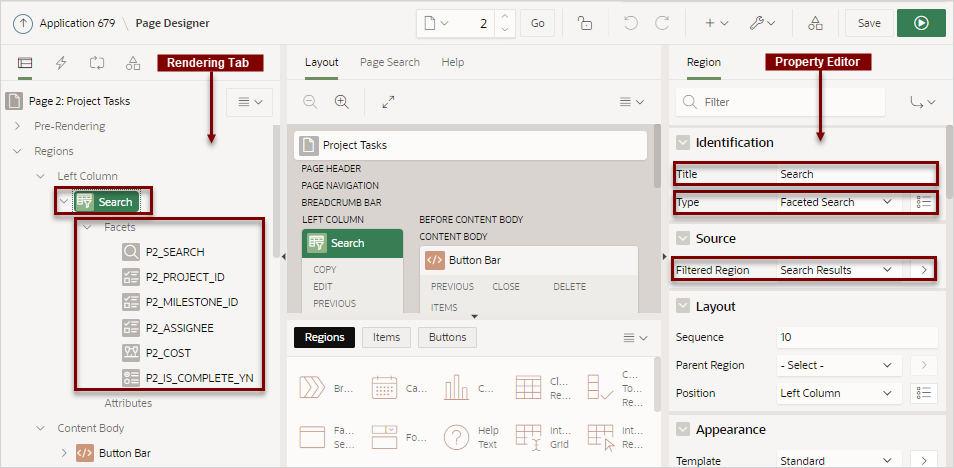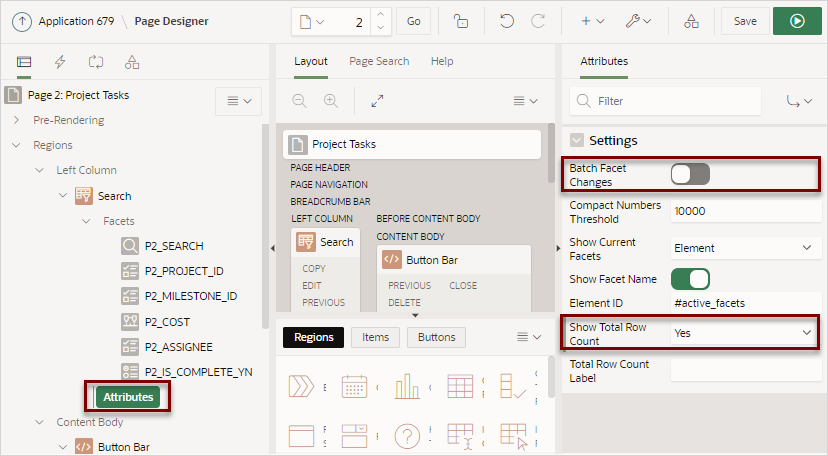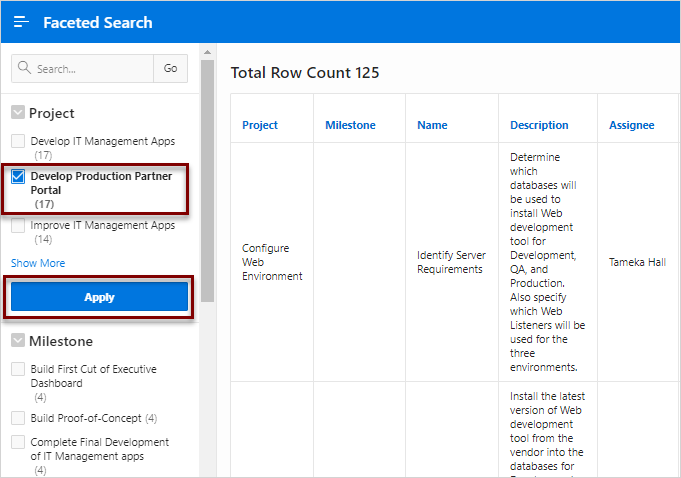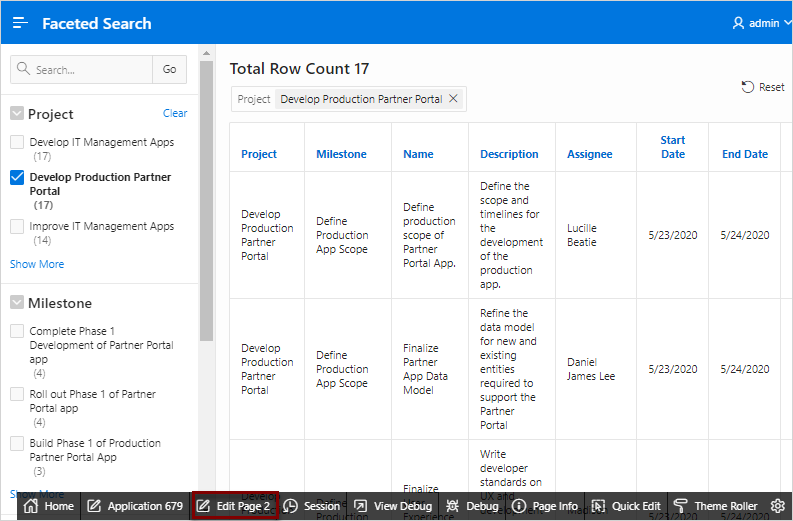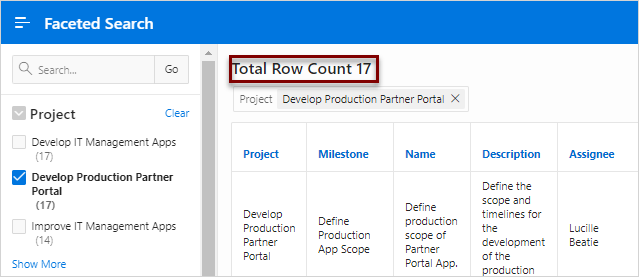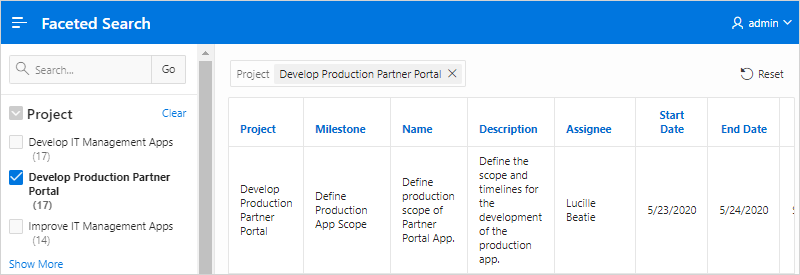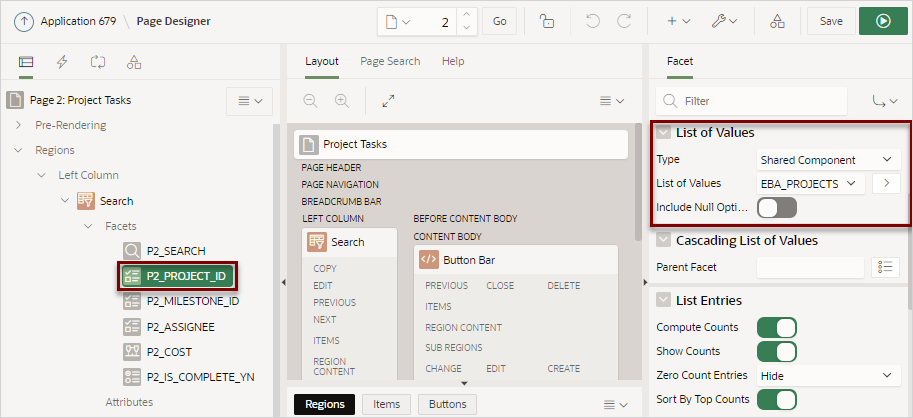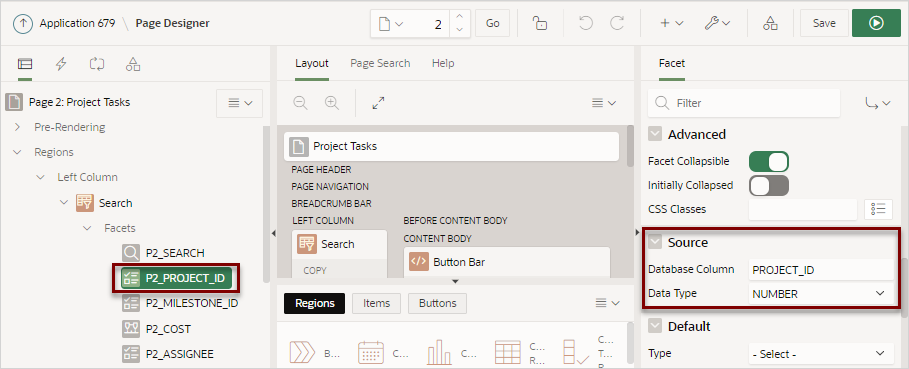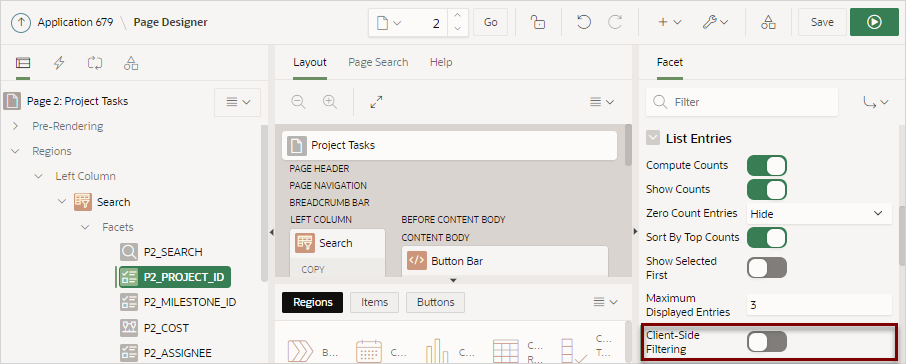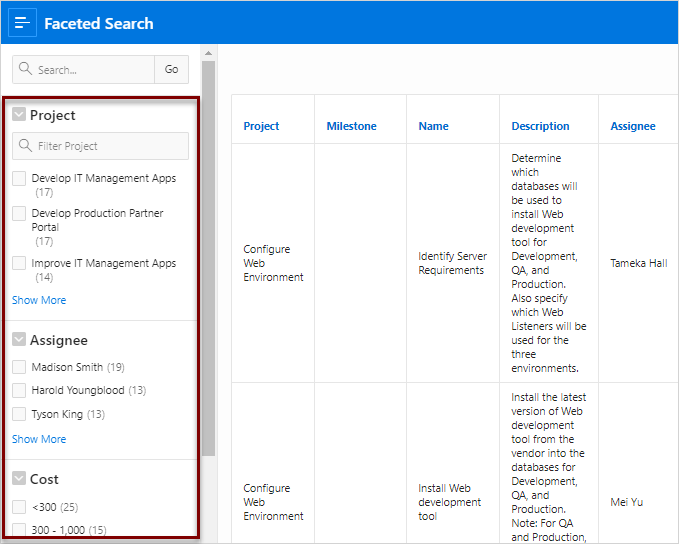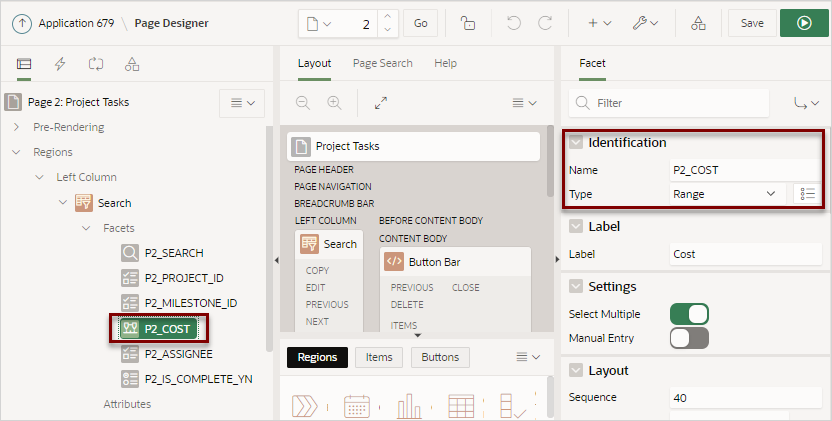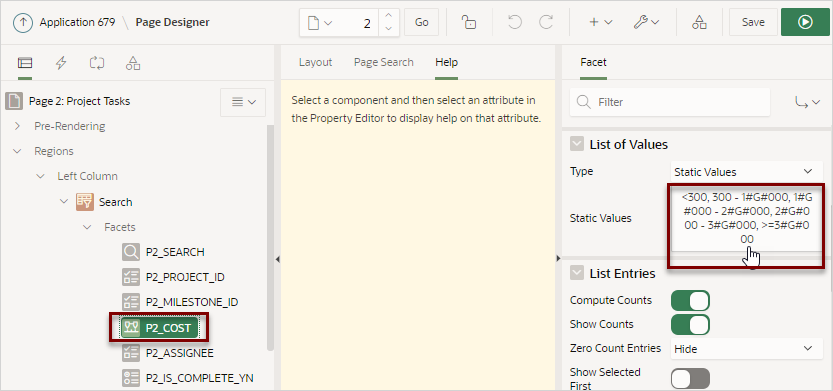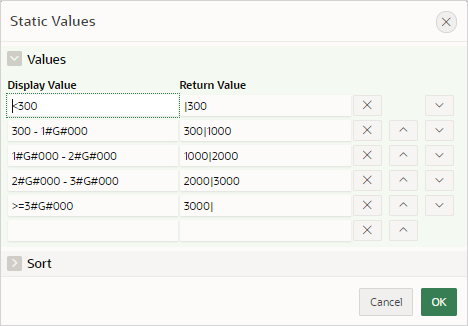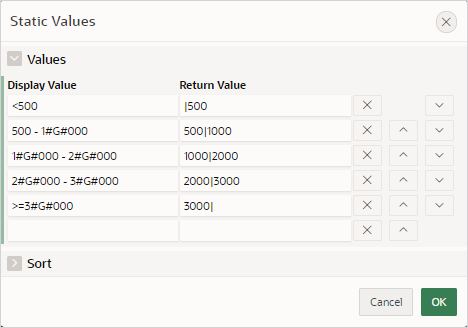10.5.5 Editing a Faceted Search Page
Learn about how attributes can change faceted search page behavior.
Tip:
The examples in this topic are built on the
EBA_PROJECT_TASKS table available in the
sample dataset, Project Data. To install a sample dataset, see "Using
Sample Datasets" in Oracle Application Express SQL Workshop Guide.
- Viewing a Faceted Search Page in Page Designer
View a faceted search page in Page Designer. - Understanding a Faceted Search Page
Learn about the regions that comprise a faceted search page. - Example: Editing Faceted Search Region Attributes
Edit region Attributes to change general search facet region behavior. - Example: Editing Facet Attributes
Edit facet attributes to change facet behavior. - Example: Editing the Static List of Values for a Range Facet
Edit a range facet that displays as a static list of values.
Parent topic: Managing Faceted Search
10.5.5.1 Viewing a Faceted Search Page in Page Designer
View a faceted search page in Page Designer.
To view a faceted search page in Page Designer:
Parent topic: Editing a Faceted Search Page
10.5.5.2 Understanding a Faceted Search Page
Learn about the regions that comprise a faceted search page.
About the Search Region
A faceted search page features a Search region which enables users to narrow down the search result and a Search Results region which displays as either a classic report or cards report.
The Search region displays in the left pane or Rendering tab. Selecting the Search region displays attributes in the Property Editor. In the following image, the Search region Type is defined as Faceted Search. The Filtered Region attribute identifies the Search Results region. In this example, Filtered Region is as a classic report named Search Results.
Tip:
Remember that each attribute in the Property Editor has associated Help. To view Help, select the attribute in the Property Editor and then click the Help tab in the central pane. Help describing the attribute appears in the central pane.
About Facets
Search facets display under Facets in the
Rendering tab. When you select a facet, the associated attributes display in the
Property Editor. Facets use the same naming convention as items. By default, wizards
prefix facet names using the following convention:
P<page
no>_<item
name>. For example, in the previous example, the first facet is
named P2_SEARCH).
Facets are similar to items but feature the following unique characteristics:
-
Filtering on More Than One Column - The facet of type Search, generally called Search, can filter based on more than one column and, when not external always displays at the top of the facets region.
-
Associated with a Column - The facets are associated with a column from the report region.
-
Differences with Checkbox or Select List Facets - The facet types, such as Checkbox or Select List, indicate how UI enables the user to select or filter data. Facets are not implemented the same as page items even if they have a similar naming convention. For this reason, most dynamic actions do not apply to facets.
About the Search Results
A faceted search page includes a Search Results region which displays as either a
classic report or cards report. In the following example, Search Results is a
Classic Report built on the
EBA_PROJECT_TASKS table.
About Cards Page Search Results
The Search Results in a faceted search page can display as a cards
report. The SQL query for a cards page includes special aliases such as
CARD_MODIFIERS and CARD_LINK. To link a card
to a new page, you must update CARD_LINK in the underlying SQL
query to point to the appropriate target. To see an example, see "Linking from a Cards Page."
See Also:
Parent topic: Editing a Faceted Search Page
10.5.5.3 Example: Editing Faceted Search Region Attributes
Edit region Attributes to change general search facet region behavior.
The following example demonstrates how the region attributes
Batch Facet Changes and Show Total Row
Count change the region behavior. Batch Facet
Changes controls whether the report filtering executes as soon as a facet
value changes, or individually by clicking an Apply button. Show
Total Row Count determines if a row count value displays on the page. The
following example is built on the EBA_PROJECT_TASKS table available
in the sample dataset, Project Data.
To edit Search facet region Attributes:
Parent topic: Editing a Faceted Search Page
10.5.5.4 Example: Editing Facet Attributes
Edit facet attributes to change facet behavior.
The following example demonstrates how to review a facet in Page Designer
and edit the Client-Side Filtering and Depending
On attributes and change facet behavior. Enabling Client-Side Filtering adds a search field which enables users to filter
the facet list. Depending On makes the display of one facet
dependent upon another. The following example is also built on the
EBA_PROJECT_TASKS table available in the sample dataset,
Project Data.
To edit facet attributes:
- View the page in Page Designer.
- Review the P2_PROJECT_ID facet:
- Add a Project filter to the Search region by enabling the Client-Side Filtering
attribute:
- Only show Milestones for the selected Project by enabling the
Depending On attribute.
Parent topic: Editing a Faceted Search Page
10.5.5.5 Example: Editing the Static List of Values for a Range Facet
Edit a range facet that displays as a static list of values.
The following example demonstrates how to edit a facet that
renders as a static list of values. The following example is built on the
COST column of the EBA_PROJECT_TASKS table
available in the sample dataset, Project Data. This example demonstrates how to
update the Cost list shown in the following illustration so that the first two rows
display in increments of 500 instead of 300.
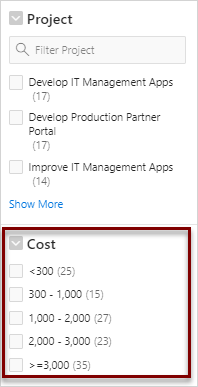
Description of the illustration cost_list.png
To edit a facet that displays as a static list of values:
Parent topic: Editing a Faceted Search Page
